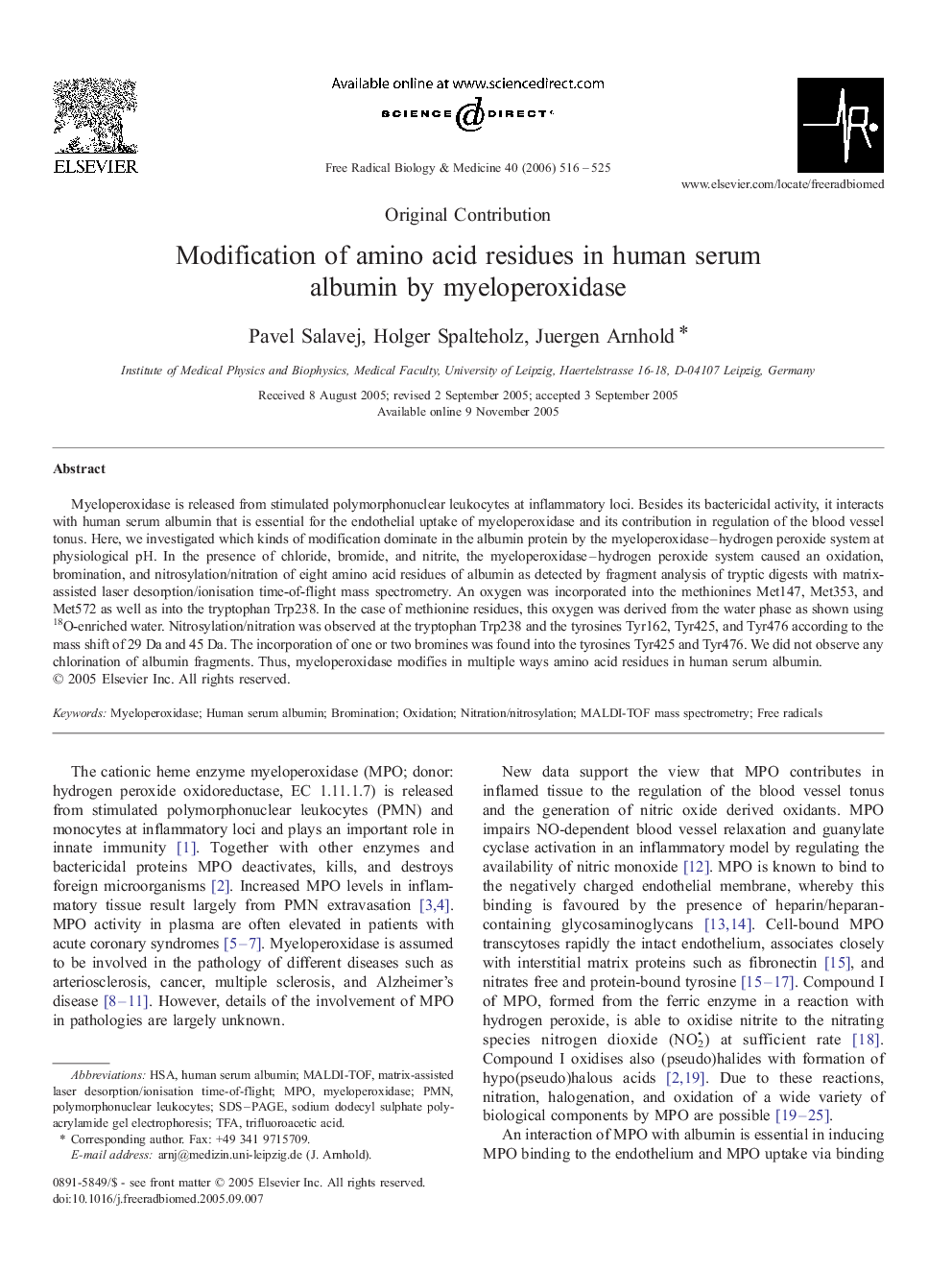| Article ID | Journal | Published Year | Pages | File Type |
|---|---|---|---|---|
| 1912025 | Free Radical Biology and Medicine | 2006 | 10 Pages |
Myeloperoxidase is released from stimulated polymorphonuclear leukocytes at inflammatory loci. Besides its bactericidal activity, it interacts with human serum albumin that is essential for the endothelial uptake of myeloperoxidase and its contribution in regulation of the blood vessel tonus. Here, we investigated which kinds of modification dominate in the albumin protein by the myeloperoxidase–hydrogen peroxide system at physiological pH. In the presence of chloride, bromide, and nitrite, the myeloperoxidase–hydrogen peroxide system caused an oxidation, bromination, and nitrosylation/nitration of eight amino acid residues of albumin as detected by fragment analysis of tryptic digests with matrix-assisted laser desorption/ionisation time-of-flight mass spectrometry. An oxygen was incorporated into the methionines Met147, Met353, and Met572 as well as into the tryptophan Trp238. In the case of methionine residues, this oxygen was derived from the water phase as shown using 18O-enriched water. Nitrosylation/nitration was observed at the tryptophan Trp238 and the tyrosines Tyr162, Tyr425, and Tyr476 according to the mass shift of 29 Da and 45 Da. The incorporation of one or two bromines was found into the tyrosines Tyr425 and Tyr476. We did not observe any chlorination of albumin fragments. Thus, myeloperoxidase modifies in multiple ways amino acid residues in human serum albumin.
